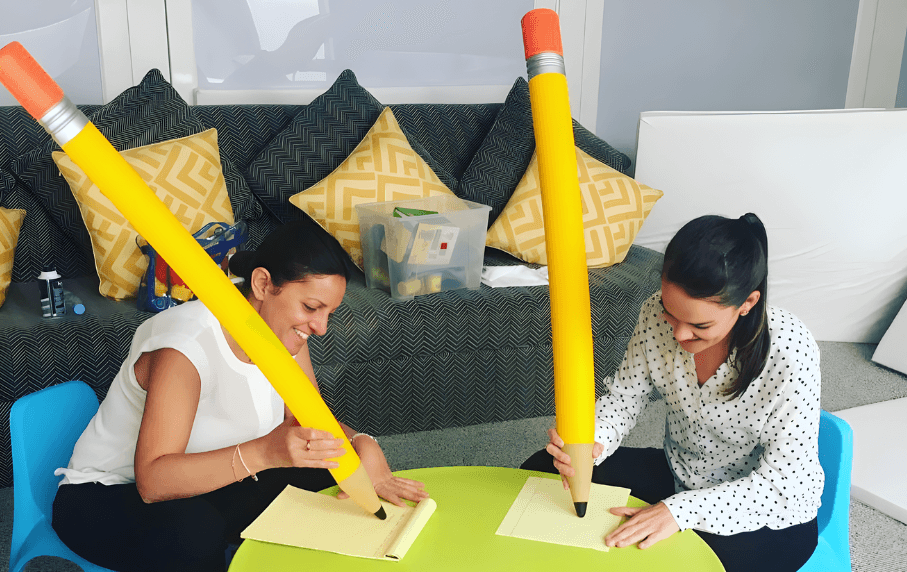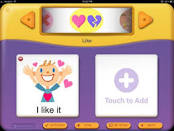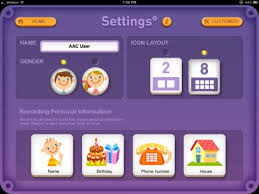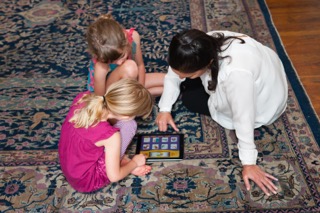
 For a moment think about TALKING and COMMUNICATING. Are they the same thing? I consult for a family, who have a little boy Sammy, with a rare genetic disorder. Sammy is three and is unable to communicate using spoken language but does this little boy try his best to communicate!! His smiles, infectious giggles and facial expressions tell an entire story. He has now learned to use the app My Very First AAC to express his needs and is moving onto a more complex device.
For a moment think about TALKING and COMMUNICATING. Are they the same thing? I consult for a family, who have a little boy Sammy, with a rare genetic disorder. Sammy is three and is unable to communicate using spoken language but does this little boy try his best to communicate!! His smiles, infectious giggles and facial expressions tell an entire story. He has now learned to use the app My Very First AAC to express his needs and is moving onto a more complex device.
I love this app, it is parent friendly, simple to use, and photos/voice recordings can also be added. Sammy’s little fingers now quickly swipe away as he tells his mum, “I like it, more ice cream,” and his mum giggles along adding, “You’ve had enough ice cream for today Sammy!”

So while most people think of talking and communication as pretty much the same thing, you can see from the example of Sammy, that there is much more involved than just speaking. Communication is the term with the broadest meaning and refers to any way of getting a message between a sender and a receiver (Paul and Fahim, 2016, “Let’s Talk: Navigating Communication Services and Supports for Your Young Child with Autism”).

Young children develop a variety of ways to communicate their needs before they begin to speak. They use eye-contact, gestures, facial expressions and body postures to convey their different messages. Their ability to speak becomes an additional layer to an already present communication system. In addition, typically developing children are able to understand many different communication signals. Some children with ASD are able to produce many words, sometimes even long, complex sentences but this does not necessarily mean that they are successful communicators. You can talk but it does not mean you are exchanging ideas with another person or with a group of people. Social communication includes our ability to understand and use words. As a result we are able to relate to others in a meaningful way. If you have ever travelled to a foreign country and you don’t speak the same language you may be able to communicate some of your basic needs but you will have difficulty communicating complex and precise ideas, and your ideas may even get lost in translation.
The ability to communicate therefore allows for independence and more importantly it leads to quality of life. When you consider how you use your language on a daily basis, you will find that one way, is to convey your preferences and desires. What if you were unable to do this? What would happen if you could not tell someone that the music is too loud and it is giving you a headache, or that the smell of the food is making you nauseous, or that you don’t understand what you are being asked to do? How would you behave? You would likely become frustrated and upset!
Communicating in a meaningful way is difficult for many children with ASD and for this reason they may resort in inappropriate behavior to have their needs understood and met. They may even scream, become aggressive or hurt themselves. At these times we must remember that such inappropriate behaviors serve a function and their purpose is to communicate. Therefore social communication and the desire to communicate becomes a very important area that is assessed and considered when planning intervention. If you are concerned that your child is having difficulty communicating with you and others, speak to your local GP or arrange and appointment with a Speech and Language Pathologist. They will be able to help you and give you ideas to help you and your child (see previous post on People Games for ideas to support communication).